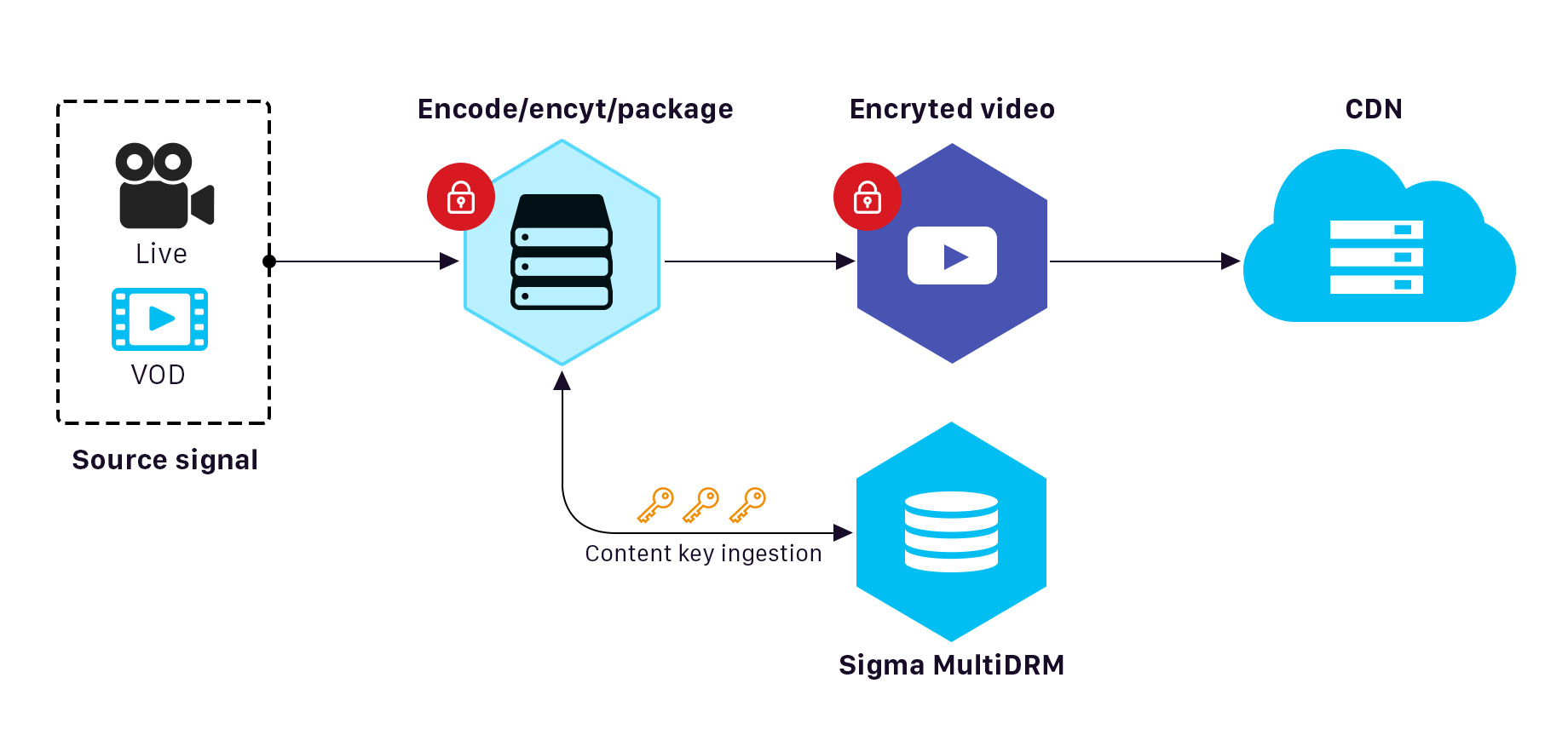In today’s digital landscape, the rapid proliferation of online content has brought unprecedented opportunities for creators and distributors. However, this digital boom also poses significant challenges, particularly in safeguarding intellectual property from unauthorized access and distribution. Digital Rights Management (DRM) emerges as a crucial solution in this context, providing robust mechanisms to safeguard digital content from music and movies to e-books and software. This article helps you explore how DRM protects content and delve into its technologies, benefits, challenges, and real-world applications.
Introduction to DRM Protects Content
Definition and Significance of DRM
Digital Rights Management (DRM) refers to a suite of technologies and strategies designed to control and protect the use of digital content and devices. It ensures that digital media such as music, movies, e-books, software, and other types of digital files are used according to the terms set by the content creators and distributors. In the digital age, where the ease of copying and distributing content can lead to significant revenue losses for creators and companies, DRM has become an essential tool.
DRM’s significance extends beyond merely preventing piracy; it helps maintain the integrity of digital works, ensures that creators are fairly compensated, and allows for the secure distribution of content in a way that respects both the creator’s rights and the consumer’s experience.
Importance of Protecting Digital Content
Protecting digital content is crucial due to several reasons:
- Financial Security: Without adequate safeguards, creators and businesses can suffer substantial financial losses due to piracy and unauthorized distribution.
- Integrity Maintenance: How DRM protects content helps maintain the integrity and reputation of the creators by ensuring that their work is not altered, misused, or misrepresented.
- Sustainable Ecosystem: Effective content protection fosters a sustainable environment for artists, developers, and publishers by ensuring they receive fair compensation for their efforts, which in turn encourages ongoing innovation and creativity.
Role of DRM in Safeguarding Content
DRM plays a pivotal role in content protection by enforcing restrictions on how digital media can be used. This includes controlling the number of devices that can access the content, restricting copying or sharing, and ensuring that only authorized users can access the content. By implementing DRM, creators can secure their intellectual property, control the distribution of their work, and protect their revenue streams and intellectual property rights.

Read More: DRM Protection: Safeguarding Digital Content in the Digital Age
Understanding DRM Protected Content
Overview of DRM Technologies and Mechanisms
DRM technologies encompass a range of methods designed to protect digital content. These include:
- Encryption: This method scrambles the content so that it can only be accessed by those with the correct decryption key. Encryption ensures that even if the content is intercepted, it cannot be understood without the appropriate authorization.
- Digital Watermarks: These are unique identifiers embedded in the content, allowing owners to trace and prove ownership. Watermarks can be visible or invisible and help in identifying the source of unauthorized copies.
- Access Control Technologies: These ensure that only authorized users can access the content. Access control can be implemented through various means, including licenses, authentication processes, and digital certificates.
Types of Digital Content Protected by DRM
DRM can be applied to various forms of digital content, including:
- Media: Music, movies, and television shows are protected to prevent illegal downloads and sharing.
- E-books: Digital books are safeguarded to prevent unauthorized copying and distribution.
- Software: Applications and games use DRM to prevent piracy and ensure that only licensed users can access the software.
- Educational Content: Online courses and digital educational resources use DRM to protect intellectual property and ensure that access is limited to enrolled students or authorized users.
- Images and Photographs: Professional photography and stock images are protected by DRM to prevent unauthorized use and distribution.
Significance of DRM in Various Industries
DRM is essential across multiple industries:
- Media: Protects revenues from films, music, and streaming services by preventing unauthorized access and distribution.
- Publishing: Ensures authors and publishers get compensated for digital books and prevents piracy.
- Software: Prevents piracy, ensuring that developers are paid for their work and protecting against unauthorized software modifications.
- Education: Secures digital learning materials and online courses, ensuring only registered students can access the content.
- Gaming: Protects video games from piracy and unauthorized distribution, ensuring that developers receive fair compensation for their work.
Key Features of DRM Protection for Content
Encryption and Access Control in DRM
Encryption is a fundamental aspect of DRM, protecting content by making it inaccessible without the correct decryption key. Access control mechanisms ensure that only authorized users can access content, often requiring authentication through usernames, passwords, or other verification methods. These mechanisms work together to ensure that digital content remains secure from unauthorized access.
Licensing and Usage Restrictions in DRM Systems
DRM systems manage licenses, which define how content can be used. These licenses can restrict:
- Number of Devices: Limiting the number of devices that can access the content ensures that a single purchase cannot be used to distribute the content widely.
- Usage Duration: Setting time limits on how long the content can be accessed helps in cases like rental models or subscription services.
- Usage Rights: Controlling whether the content can be copied, printed, or shared prevents unauthorized distribution and usage.
Monitoring and Enforcement Mechanisms in DRM Solutions
DRM solutions often include monitoring tools that track how content is used. These tools can detect unauthorized access or distribution and enforce compliance by disabling access or taking legal action against violators. Monitoring ensures that any breach of DRM protections can be quickly identified and addressed, maintaining the security and integrity of the content.

Benefits of DRM Protection for Content
Preventing Unauthorized Access and Distribution of Content
DRM helps prevent piracy by restricting access to authorized users only. This protection ensures that content is not illegally copied or shared, maintaining the creator’s control over their work. By securing digital media, DRM prevents the financial and reputational damage that can result from unauthorized distribution.
Safeguarding Intellectual Property and Revenue Streams
By controlling how digital content is accessed and used, DRM protects the intellectual property of creators and helps maintain their revenue streams. This protection is particularly important in industries like media and software, where piracy can lead to significant financial losses. DRM ensures that creators and companies are compensated for their work, enabling them to continue producing high-quality content.
Ensuring Compliance with Copyright and Licensing Regulations
DRM ensures that content usage complies with copyright laws and licensing agreements. This compliance protects creators from legal issues and ensures they receive fair compensation for their work. By enforcing legal usage terms, DRM helps maintain a fair and equitable digital marketplace where creators’ rights are respected.
Challenges and Considerations in DRM Protected Content
Balancing Security with User Experience in DRM Systems
One of the main challenges of DRM is finding a balance between security and user experience. Overly restrictive DRM can frustrate legitimate users, leading to a negative experience and potential loss of customers. Effective DRM should provide robust security without compromising usability. Striking this balance involves designing DRM systems that are transparent to the user, while still providing strong protection against unauthorized use.
Addressing Compatibility Issues Across Devices and Platforms
DRM systems must be compatible across various devices and platforms. Incompatibility can prevent users from accessing content on their preferred devices, limiting the reach of the content and potentially reducing revenue. Ensuring cross-platform compatibility involves developing DRM solutions that work seamlessly on different operating systems, devices, and media players.
Dealing with Potential Limitations and Drawbacks of DRM Implementation
Implementing DRM can be costly and complex. Additionally, there are always determined individuals who may find ways to bypass DRM protections. Companies must weigh the benefits of DRM against these potential drawbacks and continuously update their systems to address new threats. Effective DRM implementation requires ongoing investment in technology and expertise to stay ahead of potential security breaches.

Read More: Raise awareness of digital copyright protection with DRM
Case Studies and Examples of How DRM Protects Content
Successful Implementation of DRM in Media Streaming Services
Streaming services like Netflix and Spotify use DRM to protect their content. By encrypting streams and controlling access through user accounts, these services ensure that only paying subscribers can access their media libraries. This approach not only prevents piracy but also allows these companies to offer flexible subscription models that appeal to a broad audience.
DRM Strategies in E-book Publishing Industry
Amazon’s Kindle platform uses DRM to protect e-books. Books purchased on Kindle are tied to the user’s account and can only be accessed through authorized devices. This prevents unauthorized sharing and copying of e-books, ensuring that authors and publishers receive fair compensation for their work. Kindle’s DRM strategy includes features like limiting the number of devices that can access a single account, which helps prevent abuse of the system.
Challenges Faced by Software Developers in DRM Protection
Software developers often face challenges with DRM, such as balancing protection with usability. For instance, some users may be frustrated by constant online verification checks. However, successful implementations, like those by Adobe and Microsoft, show that effective DRM can significantly reduce software piracy. These companies use a combination of encryption, licensing, and online authentication to protect their software products.
Introduce Sigma Multi DRM Protect Content
One of the leading solutions in the DRM market is Sigma Multi DRM, offered by ThuDo Multimedia. Sigma Multi DRM provides comprehensive protection for various types of digital content, ensuring secure and controlled access. ThuDo Multimedia’s expertise in DRM technology makes it an excellent choice for content creators looking to safeguard their intellectual property. It supports a wide range of DRM technologies, including Widevine, PlayReady, and FairPlay, providing robust protection across different platforms and devices.
Conclusion
DRM is a critical tool in the digital age, offering robust protection for various forms of digital content. While implementing DRM comes with challenges, its benefits in preventing unauthorized access, protecting intellectual property, and ensuring compliance with regulations are invaluable. By leveraging advanced DRM solutions like Sigma Multi DRM from ThuDo Multimedia, content creators can secure their work and maintain their revenue streams effectively. Ensuring that digital content remains protected helps foster a healthy digital ecosystem where creators can thrive and consumers can enjoy high-quality content with confidence.


Recent Comments